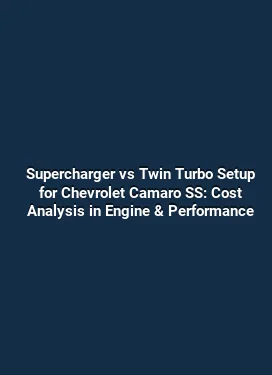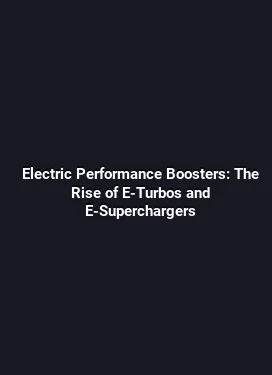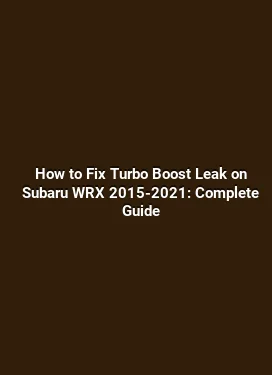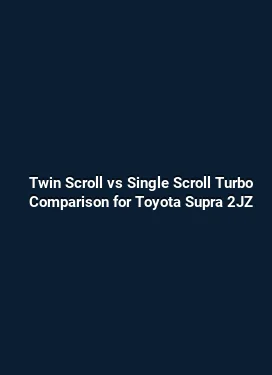Engine Swaps Explained: Legal, Technical, and Performance Considerations
Understanding the Landscape of Engine Swaps

Engine swaps are a pursuit that blends technical curiosity with practical goals. At the core, a swap involves replacing the original powerplant with a different engine, often to improve reliability, availability of parts, efficiency, or performance potential. The landscape is shaped by vehicle architecture, electronics compatibility, and the specific objectives of the project. Prospective builders typically begin with a clear target: a reliable daily driver, a high-performance street car, or a unique project that blends modern technology with classic chassis dynamics.
Across modern automotive ecosystems, engine swaps have evolved beyond simple bolt-in conversions. Advances in engine management, sensor integration, and modular harness designs enable more seamless integration even when the donor engine originates from a different manufacturer or era. This evolution has broadened the set of feasible combinations, but it also raises questions about compatibility, reliability, and long-term operability under various driving conditions. A practical approach starts with a thorough evaluation of the vehicle’s chassis, transmission options, drivetrain layout, and the legality of the chosen configuration in your jurisdiction.
Key Considerations Before Starting

Before committing to a swap, it is essential to map out several focal points. Structural integrity matters: the engine mounting points, weight distribution, and cooling system capacity must align with the new powerplant. Electrical integration is another critical piece. Modern engines rely on a network of sensors, actuators, and control units that must communicate effectively with the vehicle’s existing systems. Thermal management also plays a pivotal role; a higher-output engine often demands enhanced radiators, fans, and airflow management to prevent heat-related performance degradation.
Finally, the end-use scenario influences decision-making. A swap intended for daily commuting benefits from reliability and serviceability, while a track-focused build may prioritize high-rpm stability and lightweight, aggressive power delivery. The blend of purpose, engineering feasibility, and budget defines the direction of the project and helps set realistic expectations for outcomes.
Legal and Regulatory Considerations
Legal compliance forms a cornerstone of any engine swap project. Regulations vary widely by country and even by region within a country, but several common themes recur. First, emissions standards often drive the acceptability of a swapped engine. Many jurisdictions require emissions testing and proof that the replacement engine meets or exceeds the baseline standards for the vehicle class. Some areas mandate the use of a certified engine and a corresponding emission control system compatible with the vehicle’s platform.
Second, inspection regimes can scrutinize the completeness of the swap, including the visibility of engine identification, labeling of components, and integration of safety systems. In some cases, a swap may trigger modifications to the vehicle’s VIN documentation or registration status, which can affect insurance coverage and resale value. Third, safety and compliance considerations extend to driveline components, braking systems, and structural reinforcements that may be necessary to accommodate the new mass and torque characteristics.
Practical strategies to navigate legal terrain include engaging with reputable specialists who understand local requirements, maintaining meticulous records of all parts and modifications, and planning for prolonged administrative processes. Early discussions with the relevant motor vehicle authority or a licensed inspection facility can prevent costly delays later in the project and help align expectations with regulatory realities.
Documentation and Compliance Roadmap
A structured approach to documentation aids in smoother processing. Compile a parts inventory with serial numbers, production years, and origin details. Preserve service manuals, installation diagrams, and any custom harness schematics. If available, obtain emissions test data for the donor engine and verify compatibility with the vehicle’s exhaust aftertreatment system. When in doubt, consult with local inspectors or engineers who specialize in drivetrain modifications to ensure that the plan aligns with applicable standards.
Technical Foundations and Integration Challenges
Technical integration hinges on aligning mechanical interfaces, electronics, and software control. Engine mounts, transmission compatibility, and driveline geometry must be reconciled to preserve chassis dynamics and suspension behavior. The choice of transmission—whether original or donor—drives pedal feel, gear ratios, and torque delivery across the operating range. A well-planned rollout also considers the exhaust system path, intake routing, and accessory belt drives in the context of the new layout.
Modern engines rely on a network of sensors and controllers to manage fuel delivery, ignition timing, and variable cam timing, among other parameters. When a non-native engine is installed, the vehicle’s ECU (or its modern analog) must interpret inputs from the new powerplant accurately. In some builds, a standalone engine management solution may be introduced to bridge gaps between the engine’s electronics and the vehicle’s existing systems. This approach enables precise control over fueling, ignition, and idle characteristics while preserving driveability and reliability.
Harnesses, Connectors, and Communication Protocols
Electrical harnesses are a critical junction in any swap. The goal is to establish reliable communication pathways between sensors, actuators, and the control units that govern engine behavior. Compatibility extends beyond physical connectors to signal voltage levels, ground schemes, and data protocols. Engineers often segment harness work into three zones: power distribution, sensor networks, and actuator control. Careful routing and protection of wires prevent interference, heat damage, and chronic electrical gremlins that can undermine sophisticated powertrains over time.
Choosing the Right Engine for Your Vehicle
Decision-making begins with a clear performance target and an honest assessment of the vehicle’s baseline dynamics. For some owners, a modern powerplant with efficient intake and turbocharging offers a meaningful uplift without sacrificing everyday usability. For others, a naturally aspirated or high-revving unit may deliver the sensory satisfaction they crave, provided the chassis and suspension can handle the drivetrain’s character.
Considerations include power-to-weight ratios, torque curves, and the availability of compatible parts and service. A donor engine with a robust aftermarket ecosystem can shorten development time and enhance long-term support. Conversely, a less common engine may demand more custom fabrication and in-house adaptation. In all cases, validating cooling capacity, lubrication strategy, and exhaust routing early in the design phase reduces the risk of surprises during testing and road trials.
Evaluating Cooling and Lubrication Demands
High-performance engines often generate substantial heat, especially under sustained loads. A swap plan should incorporate a cooling system capable of maintaining optimal temperatures across hot climates and spirited driving. This may include oversized radiators, electric fans with variable duty cycles, and improved ducting to ensure adequate airflow. Lubrication challenges are equally important; rated oil pump capacity, cooler integration, and synthetic oil compatibility all influence reliability under extended high-demand use.
Installation Challenges and Best Practices
The actual installation phase is where theory meets practice. Alignment of engine mounts with chassis rails, transmission bellhousing compatibility, and drivetrain alignment are fundamental to achieving smooth operation. A phased approach—mock installation, alignment checks, and progressive torqueing—helps identify clearance issues early and minimizes the risk of interference with the steering rack, suspension components, or the exhaust system.
One practical technique is to create a modular plan for wiring and plumbing. Group related components into discrete bundles, label connectors, and document routing paths. This systematic organization translates into easier troubleshooting, more straightforward upgrades, and more predictable service intervals. It also reduces the likelihood of elusive electrical faults that can surface after extensive heat cycling and road testing.
Maintenance Considerations After Installation
Post-installation maintenance is a critical aspect of long-term satisfaction. Establish a routine for checking coolant conditions, oil quality, and air filtration, especially when the engine operates in a different thermal envelope than the original setup. Regular inspection of exhaust components for heat-related wear and gasket integrity helps preserve performance and prevent leaks that can impact emissions and drivability.
Safety, Certification, and Emissions
Safety remains paramount throughout the project. This includes ensuring that brake and suspension systems are up to the task of handling increased mass or thrust, as well as verifying that steering response remains precise and predictable. Certification processes related to emissions and safety inspections often require a documented testing phase that demonstrates stable idle, smooth operation across RPM bands, and consistent performance under load.
In the realm of emissions, the replacement engine should ideally operate with a calibrated exhaust and aftertreatment configuration that remains compliant with the regulatory framework. Real-world testing under varied driving cycles helps confirm that emissions are within acceptable limits across typical conditions, reducing the risk of non-compliance during checks at inspection sites or roadside enforcement.
Driveability and Tuning Nuances
Engine management calibration is central to driveability. Tuning focuses on achieving a seamless blend of throttle response, torque delivery, and fuel economy. For enthusiasts, this often means optimizing the fuel map for both idle quality and wide-open-throttle performance, ensuring smooth transitions between engine states, and avoiding disruptive timing shifts that could compromise reliability. A thoughtful calibration also considers heat soak behavior and altitude-induced air density changes, which can subtly influence power output and response characteristics.
Performance Outcomes and Real-World Tuning
Swapping engines can unlock tangible performance benefits, but they come with trade-offs that must be understood. A well-executed swap can deliver stronger acceleration, improved efficiency for daily use, or a broader range of power available at different RPMs. The key is to tailor the setup to the vehicle’s fundamental strengths while compensating for any weaknesses introduced by the new powerplant. This often involves refining gearing, optimizing intake and exhaust efficiency, and implementing a drivetrain strategy that preserves traction and stability across varied driving scenarios.
Case Study: A Balanced Street/Track Hybrid
In a practical example, a compact coupe received a modern turbocharged engine from a donor sports sedan. The installation prioritized a symmetrical weight distribution and a compact exhaust routing to minimize monotone heat buildup near the firewall. The tuning approach emphasized progressive throttle response and a torque-rich low to mid-range band for street drivability, paired with a judicious cam timing strategy to sustain power at higher engine speeds during track sessions. The result was a vehicle that felt responsive in daily driving while delivering confident performance on curves and straights alike.
Common Pitfalls and How to Avoid Them
Engine swaps attract a dedicated following of projects and builds, but certain pitfalls are common. Underestimating wiring complexity, failing to secure regulatory approvals, or neglecting cooling capacity are frequent sources of frustration. Another frequent issue is drivetrain misalignment, which can result in drivetrain vibrations, accessory belt failures, or early component wear. Proactively addressing these areas through careful planning, high-quality components, and professional alignment checks saves time and money in the long run.
Practical Checklist for a Successful Swap
Start with a detailed engineering plan that outlines mechanical interfaces, electrical integration, and cooling capacity. Create a parts map that aligns each donor component with the chassis requirements. Develop a testing plan that progresses from idle checks to controlled road testing under varied loads. Maintain a risk register that identifies potential failure modes and mitigation strategies, including spare parts, diagnostic tools, and emergency procedures. A disciplined approach reduces surprises and helps maintain momentum through the build cycle.
Future-Proofing Your Swap
Looking ahead, future-proofing involves selecting components with robust support ecosystems and keeping abreast of evolving technologies in engine management and drivetrain control. Modular harness solutions and scalable control platforms can ease future upgrades, while well-documented installation practices and certification-ready components help ensure ongoing compatibility with regulatory and service requirements. By prioritizing these elements, a swap project remains adaptable to new parts, software updates, and shifting standards over the vehicle’s lifecycle.
Long-Term Ownership and Evolution
Owners who plan for longevity should focus on accessibility of service, availability of spare parts, and a clear plan for periodic recalibration as software ecosystems evolve. A swap that anticipates routine maintenance and potential future upgrades tends to stay practical, reliable, and engaging over years of ownership.






